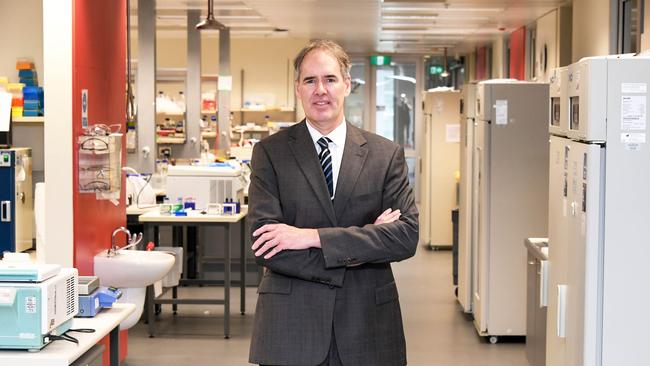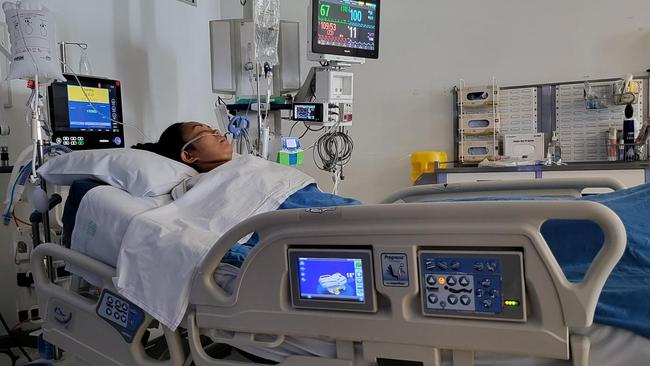Cause of a common disease that causes a quarter of heart attacks in young women pinpointed
The cause of a mystery disease that affects as many as one in 20 women and can cause sudden strokes, heart attacks, kidney failure and brain aneurysms has finally been cracked

The cause of a mystery disease that affects as many as one in 20 women and can cause sudden strokes, heart attacks, kidney failure and brain aneurysms has finally been cracked by Australian heart researchers.
Fibromuscular dysplasia, or FMD, has been described as “the rare disease that isn’t” and is thought to affect up to 5 per cent of women. It influences the protein collagen in the body, which helps maintain the shape the arteries and blood vessels.
Many people have FMD and experience no symptoms, but the disease can weaken or harden the body’s arteries and cause heart attacks, strokes or aneurysms without warning.
FMD is believed to be an underlying cause of spontaneous coronary artery dissection, or SCAD, which accounts for as many as a quarter of all spontaneous heart attacks in women under the age of 45.
Cardiologist Jason Kovacic, director and CEO of the Victor Chang Cardiac Research Institute, is one of the world’s foremost researchers studying FMD and SCAD. Professor Kovacic is the lead author of a new study published in Nature Cardiovascular Medicine which has pinpointed the genetic causes of FMD, a significant breakthrough that opens the possibility for the development of the first therapeutic targets for this newly found biological pathway.
The research found that a major gene called UBR4 plays a crucial role in driving FMD by affecting the structure of the body’s arteries.
“We know that changes in collagen and the structure of the body’s arteries are at the core of this disease, and one of the major drivers of this disease is UBR4, which controls an entire network of genes associated with FMD,” Professor Kovacic said. “Ten years ago, we knew next to nothing about what causes FMD. Now we not only know a major driver of this disease, but we also have several exciting therapeutic targets.”
Despite being so common, FMD is still largely unknown to the public and even to most doctors. The average age for diagnosis is between 50 and 55 years old, and 90 to 95 per cent of people with FMD are women.
Sydney executive Melanie Valdes, 42, was perfectly fit and healthy when she experienced a stroke almost two years ago which has left her with ongoing disability. She later discovered that she had FMD, which was the overwhelming likely cause.

“There was no warning at all,” Ms Valdes said. “I always wanted to know why this had happened. I had never heard of FMD. At first I thought it was something that was really rare, but then when I read it affects one in 20 women, I was really shocked.”
Now that her underlying condition has been identified, Ms Valdes is working with Professor Kovacic to lower her risk of future heart attacks, primarily by keeping a careful eye on her blood pressure and avoiding potentially triggers which involve fast acceleration and deceleration such as bungee jumping, roller-coasters and travelling in fast cars.
She has, however, so far made such a good recovery from her stroke that she is running a mini-marathon in Sydney this Sunday.
“The main thing is I am alive, and lucky to get a second chance at life,” Ms Valdes said.
The researchers pinpointed the genetic causes of FMD by creating the first-ever mouse models of the disease. They used skin biopsies to grow fibroblast cells to identify differences between 77 women with FMD recruited for the study and a control group. They then recreated one of FMD’s key features in humans: when vessels dilate and increase in size, they can cause aneurisms. They showed that changes in collagen and matrix proteins were affecting the artery wall, and the UBR4 gene was driving this change.
“This can be a devastating disease, but if caught early, it can be managed,” Professor Kovacic said. “Hopefully, in the future, we will also be able to treat it far more successfully.”






To join the conversation, please log in. Don't have an account? Register
Join the conversation, you are commenting as Logout